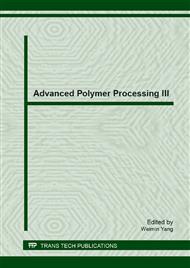p.428
p.435
p.441
p.448
p.454
p.460
p.466
p.472
p.478
Numerical Research of Thermal-Pressure Coupling Effect on Blockage Ratio in the Evacuated Tude Transportation System
Abstract:
According to the three-dimensional mathematical model and physical model of evacuated tube transportation(ETT) system, thermal-pressure coupling equations based on viscous fluid Navier-Stokes equation and k- ε turbulence model are established for the first time. The numerical simulation is carried out to investigate the inherent laws for different blockage ratios of ETT system. The simulation results show that: when the speed of the train and the pressure of the system are constants, in the temperature field, the aerodynamic heating is getting more as the blockage ratio increases, and its trend grows exponential. In the pressure field, with the increase of the blockage ratio, the stagnation pressure is gradually increased, but the growth is getting slower; vortex region pressure reduces gradually, and has accelerated the decreasing trend; the pressure difference between the head and the end of the train is linear increment.
Info:
Periodical:
Pages:
454-459
Citation:
Online since:
July 2013
Authors:
Price:
Сopyright:
© 2013 Trans Tech Publications Ltd. All Rights Reserved
Share:
Citation:


